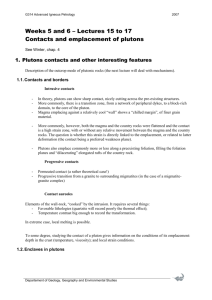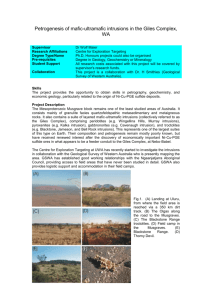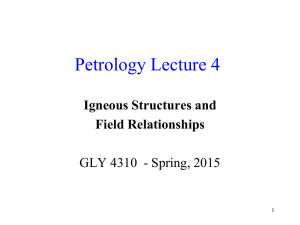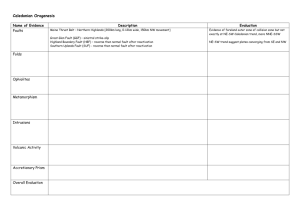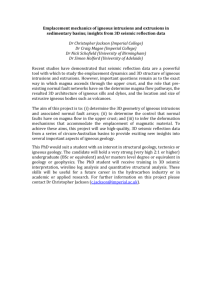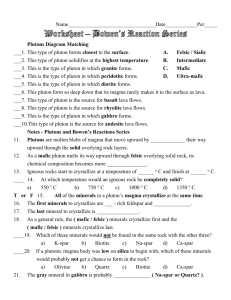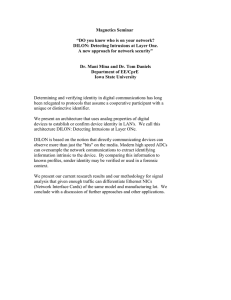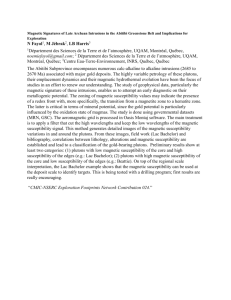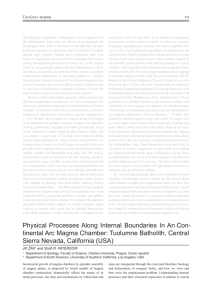Plutonic Contacts
advertisement
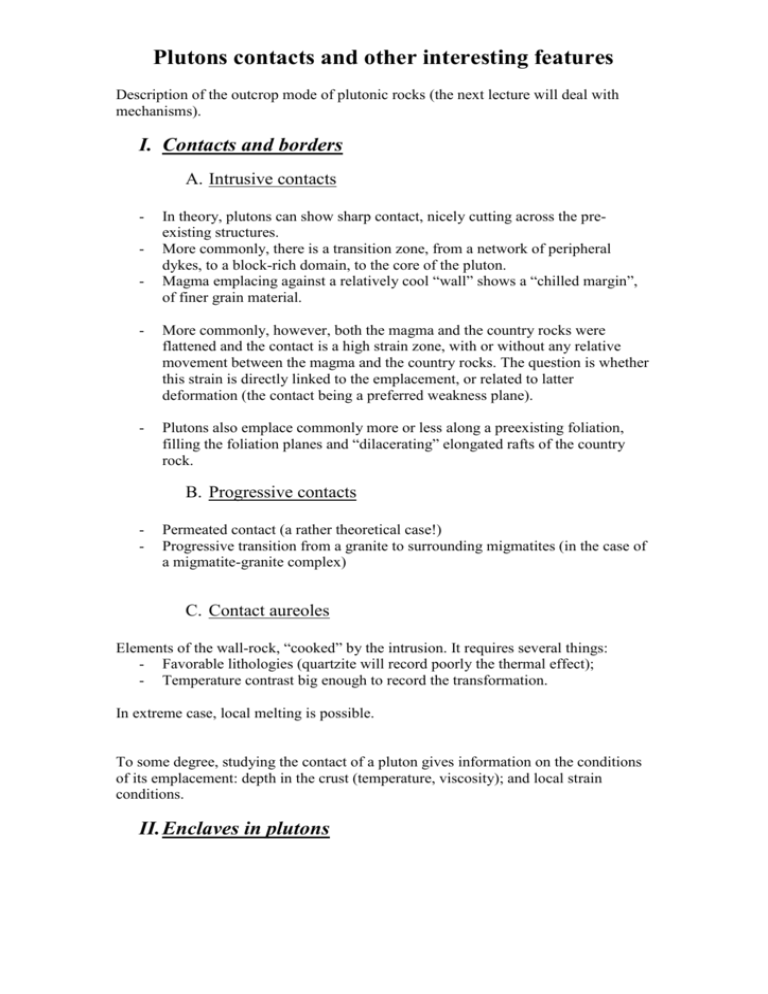
Plutons contacts and other interesting features Description of the outcrop mode of plutonic rocks (the next lecture will deal with mechanisms). I. Contacts and borders A. Intrusive contacts - In theory, plutons can show sharp contact, nicely cutting across the preexisting structures. More commonly, there is a transition zone, from a network of peripheral dykes, to a block-rich domain, to the core of the pluton. Magma emplacing against a relatively cool “wall” shows a “chilled margin”, of finer grain material. - More commonly, however, both the magma and the country rocks were flattened and the contact is a high strain zone, with or without any relative movement between the magma and the country rocks. The question is whether this strain is directly linked to the emplacement, or related to latter deformation (the contact being a preferred weakness plane). - Plutons also emplace commonly more or less along a preexisting foliation, filling the foliation planes and “dilacerating” elongated rafts of the country rock. B. Progressive contacts - Permeated contact (a rather theoretical case!) Progressive transition from a granite to surrounding migmatites (in the case of a migmatite-granite complex) C. Contact aureoles Elements of the wall-rock, “cooked” by the intrusion. It requires several things: - Favorable lithologies (quartzite will record poorly the thermal effect); - Temperature contrast big enough to record the transformation. In extreme case, local melting is possible. To some degree, studying the contact of a pluton gives information on the conditions of its emplacement: depth in the crust (temperature, viscosity); and local strain conditions. II. Enclaves in plutons A. Enclaves linked to the source of the magma 1. Microgranular mafic enclaves Reviewed in a previous lecture (magma mixing). They represent “bubbles” of a comagmatic liquid present in the granite. 2. Restites Elements of the source. The difference with xenoliths is not always easy to make, in theory they should have a “restitic” nature (refractory, with no or little of the “fusible” components). B. Enclaves related to its emplacement. 1. Xenoliths Bits and pieces of country rock. Can be either angular, rounded or elongated & dilacerated. They are in fact bits of the contact… 2. Microgranular felsic enclaves Probably represent chilled margins of the pluton, latter broken and re-incorporated into the pluton Can you try to draw a sketch showing the emplacement features in 1. a upper-crustal pluton, emplaced in a low-strain domain, far from the source? 2. A lower-crustal pluton, emplaced in a high-strain area, close to its source? III. Shape of plutons A. How to study the shape of an intrusion? - Map pattern is generally not very useful (there are exceptions, however). The geometry of the wall rock can be misleading. Geophysics is the best tool. The internal strain pattern can be a good guide. B. Shape of individual intrusions 1. Flat intrusions - Sills Laccoliths Probably the most common shape! 2. Cylindrical intrusions (or wedge-shaped) Only geophysics and 3D-drawings allow to tell… 3. Conical and other “vertical” intrusions Mostly restricted to small intrusions, seldom applies to large complexes. C. Role of the tectonic environment A first order approximation: intrusions are similar to “cracks” in the crust, and consequently reflect the stress field under which they emplaced. - Flat intrusions: 1 is the lithostatic pressure, 2 ≈ 3 - “Cylindrical” intrusions: 3 probably corresponds to 3, the main extension direction, 1 ≈ 2. - Conical/deep intrusions: obviously, 3 is vertical. Role of explosion/internal pressure? D. Batholiths and intrusion clusters Batholith = collection of pluton. - Old literature: plutons with vertical wall, arriving at depth to an hypothetical mass of granite (batholith). - Modern geoglogy: batholiths are collection of plutons, maybe not very deep. The shape of each individual pluton can be discussed.
